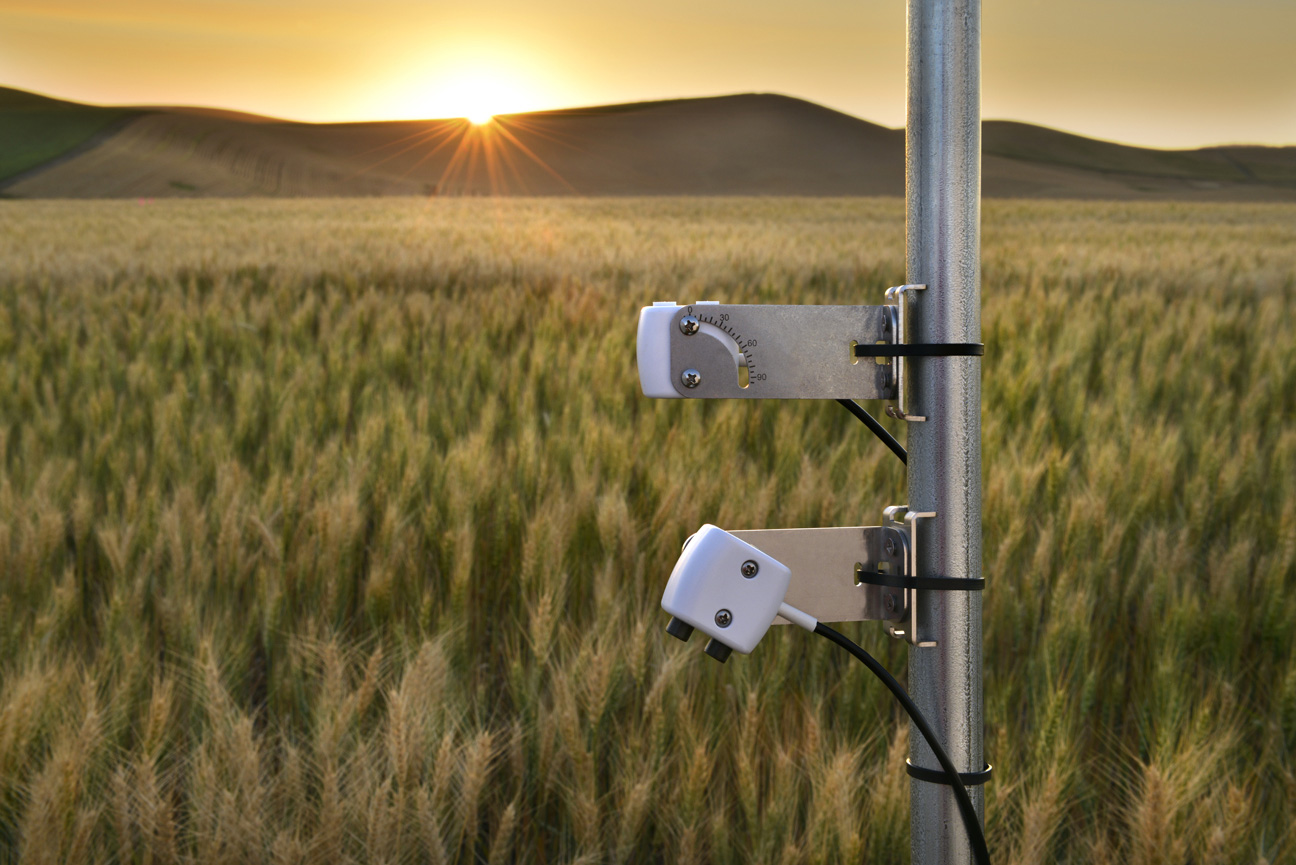E-mail: sales@wafer-sensor.com
Add: No.645 Sherbrooke St West Montreal. Que. H4A 3T4 Canada
Spectral Reflectance (SRS) Sensor |
|||||||||||||||||||||||||||||

|
|||||||||||||||||||||||||||||
Product name:Spectral Reflectance (SRS) Sensor |
|||||||||||||||||||||||||||||
Item:SRS |
|||||||||||||||||||||||||||||
Details: |
|||||||||||||||||||||||||||||
Rugged radiometer measures NDVI or PRI
· Measure NDVI or PRI vegetation indices at the plot or plant stand scale · Non-destructive sampling of canopy greenup, senescence and plant stress · Collect vegetation index data unattended for days, months or years · Use low cost, research grade sensors to maximize spatial coverage · Improve crop growth models with spatially explicit data · Monitor data remotely from office or phone Low cost, weatherproof radiometer
The SRS is a matchbox-sized, multiband radiometer that can be mounted on a fence post, tripod, or meteorological tower. It’s inexpensive enough to deploy multiple sensors simultaneously. And it’s rugged enough to leave in the field for an entire growing season, or longer. Deploy for months or even years
Most spectrometers are delicate and expensive, making long-term field deployment risky. The SRS is built for long-term exposure to the elements. Key design features: · encased in durable Geloy housing · epoxy-filled, watertight, and weatherproof · fully sealed optics These materials and methods have been tested over months and years on other buried and above ground sensors. Combined, these features help minimize drift in calibration over time. Field ready and radiometrically calibrated
Each sensor is radiometrically calibrated to a NIST-traceable standard. Readings are output in units of radiant flux density. Calibration information is stored on board the sensor so you never have to worry about keeping track of calibration coefficients. Continuously monitor NDVI, PRI at the plot scale
NDVI and PRI are calculated from measurements of of electromagnetic radiation reflected from canopy surfaces. They are correlated with canopy variables such as: · light use efficiency (LUE) · biomass and crop yield · crop and forest phenology · canopy growth · photosynthetic performance/CO2 uptake SRS sensors measure incident or reflected radiation in two bands: · Normalized Difference Vegetation Index (NDVI) bands are centered at 650 nm and 810 nm with 50 nm and 40 nm full width half maximum (FWHM), respectively. · Photochemical Reflectance Index (PRI) bands are centered at 532 nm and 570 nm with 10 nm FWHM. Hemispherical or directional field of view
NDVI and PRI are calculated as the ratio between reflected and incident radiation, measured using downlooking and uplooking sensors, respectively. Depending on ambient sky conditions, one uplooking sensor may be able to provide reference values for multiple downlooking sensors. Uplooking SRS sensors have a hemispherical view with Teflon diffusers providing a cosine corrected response. They should be mounted above the canopy with an unobstructed view of the sky. Downlooking sensors are equipped with field stops that restrict the field of view of the SRS to 36°. The field stops allow you to aim the sensor at a specific target and exclude non-canopy elements, such as a tower infrastructure, from the field of view. The sensor can be mounted to monitor single plants, row crops, plots, or forest stands. Mounting height will determine the measurement area. The measurement spot size at a nadir view angle is 0.35*height above canopy. Sensors are typically mounted above the canopy using a pole, post, tripod, or tower depending on the height of the canopy. Small size, low weight, and durable construction make the SRS suitable for attaching to a mobile sampling platform. They can also be attached to a mobile platform Low cost for maximum spatial coverage
By focusing on just two bands, it’s possible to make an accurate multiband radiometer for a fraction of what a full-feature spectroradiometer costs. Use the SRS-NDVI and SRS-PRI sensors to maximize spatial coverage and explore spatial and temporal variability in canopy structure and function. Data logging and software
The SRS is an SDI-12 digital sensor. When used with METER’s EM50 series data loggers, the SRS plugs in via stereo connector. Setup is straightforward: select the sensor type from a drop-down menu, set the measurement interval and start logging data. No programming necessary. The SRS provides readout of the individual bands in W m-2 nm-1 or W m-2 nm-1 sr-1, depending on sensor type. Decagon’s DataTrac 3 database and graphing software can manage your data set and will calculate NDVI or PRI automatically. The SRS sensor is also compatible with Campbell Scientific and other SDI-12 capable data loggers. Collect data and monitor remotely
When used with METER’s EM50G data loggers, you can monitor remote sites from your office, phone, or any internet-connected device. Observe field conditions, check sensor and system function, or download data from sites that are difficult to access.
|
|||||||||||||||||||||||||||||
 |
←[Previous:KSAT] [Next:PHYTOS 31]→ | ||||||||||||||||||||||||||||
| Related Products : |












